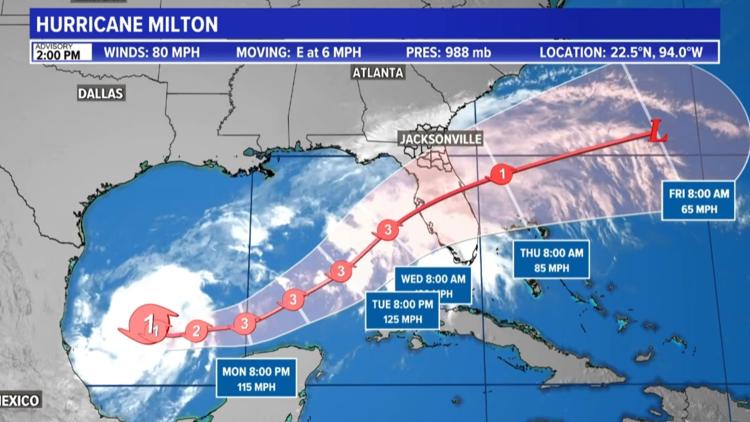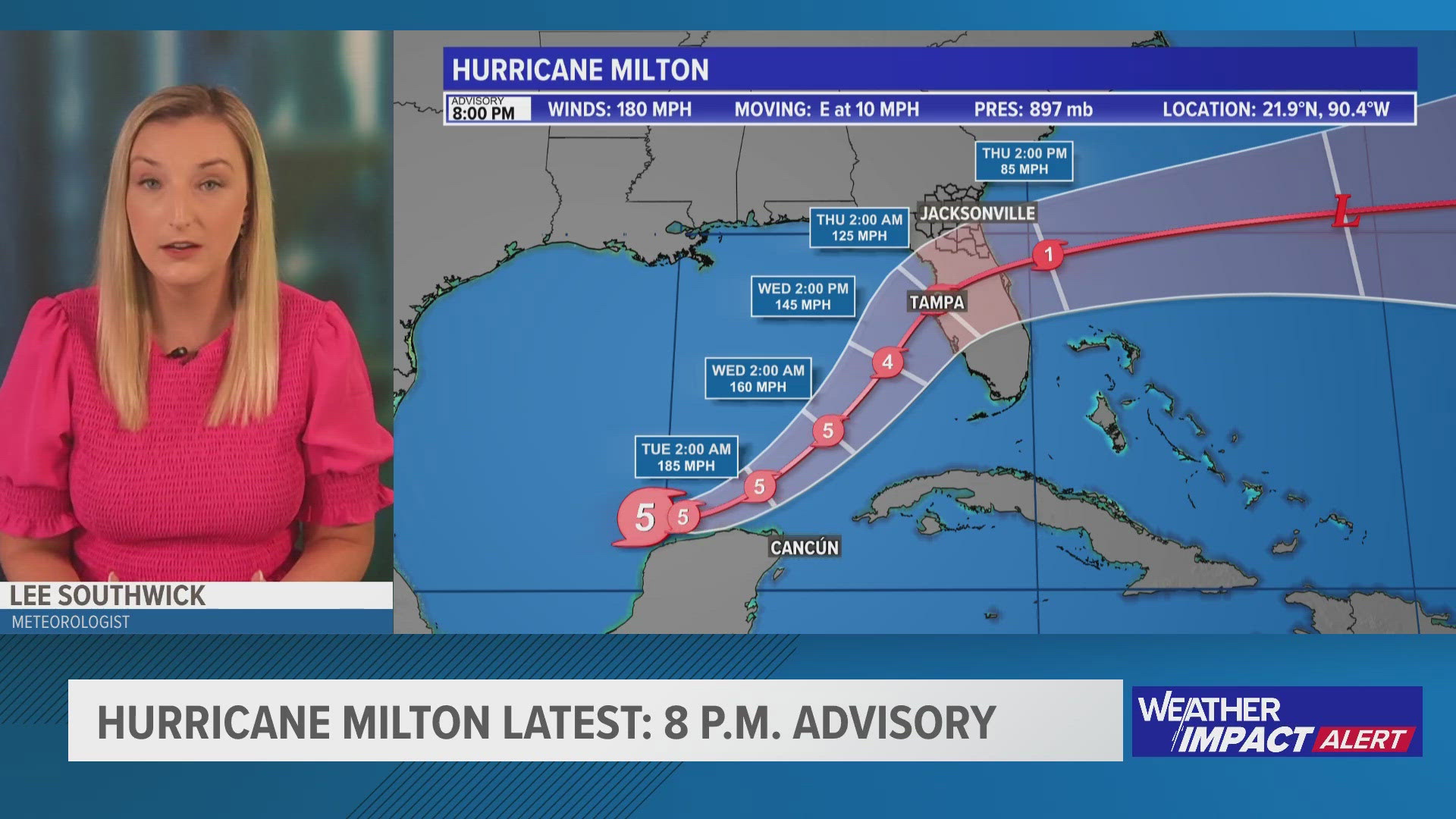JACKSONVILLE, Fla. — Hurricane Milton is expected to bring heavy rainfall and gusts of wind to the First Coast by Wednesday.
As your family prepares for the storm, it is important to gather enough food, water and supplies to last for several days in case power is knocked out to your neighborhood. We're On Your Side making sure you know what to prepare in your hurricane kit ahead of Milton's impacts on the First Coast.
The American Red Cross lists two types of hurricane kits: A Go-Kit and a Stay-at-Home Kit.
A Go-Kit is used if you have to evacuate your home, either ahead of a storm (no evacuation orders are currently in place for our area for Idalia) or because of damage making your home uninhabitable.
A Stay-at-Home Kit will ensure you have everything you need in case of power outages, flooded streets or businesses like stores, banks and pharmacies closing.
What to include in a Go-Kit:
- Three days worth of supplies that you can carry with you
- One gallon of water per person, per day for three days
- Non-perishable, easy-to-prepare food items (three-day supply)
- Manual can opener
- Disposable plates and utensils
- Paper towels
- Toilet paper
- Pet food and supplies
- Flashlight and batteries
- Battery-powered or hand-crank radio
- First aid kit
- Medications (seven-day supply in a child-proof container) and other medical supplies (hearing aids with extra batteries, glasses, contact lenses, syringes, etc.)
- Multi-purpose tool
- Extra clothing, hat and sturdy shoes
- Blanket or sleeping bag
- Sanitation and personal hygiene items
- Baby supplies (bottles, formula, baby food, diapers)
- Copies of personal documents in a waterproof container (medication list and pertinent medical information, proof of address, deed/lease to home, passports, birth certificates, insurance policies)
- Family and emergency contact information
- Cash
- Backup batteries and charges for your devices (cellphone, CPAP, wheelchair, etc.)
- Emergency blanket
- Maps of the area
- Extra set of house keys and car keys
- Games and activities for kids
What to include in a Stay-at-Home Kit:
- Two weeks' worth of supplies
- One gallon of water per person, per day for two weeks
- Non-perishable, easy-to-prepare food items (two-week supply)
- Manual can opener
- Baby supplies (bottles, formula, baby food, diapers)
- Disposable plates and utensils
- Paper towels
- Toilet paper
- Pet food and supplies
- Flashlight and batteries
- Battery-powered or hand-crank radio
- First aid kit
- Medications (one-month supply in a child-proof container) and other medical supplies (hearing aids with extra batteries, glasses, contact lenses, syringes, etc.)
- Copies of personal documents in a waterproof container (medication list and pertinent medical information, proof of address, deed/lease to home, passports, birth certificates, insurance policies)
- Cash



